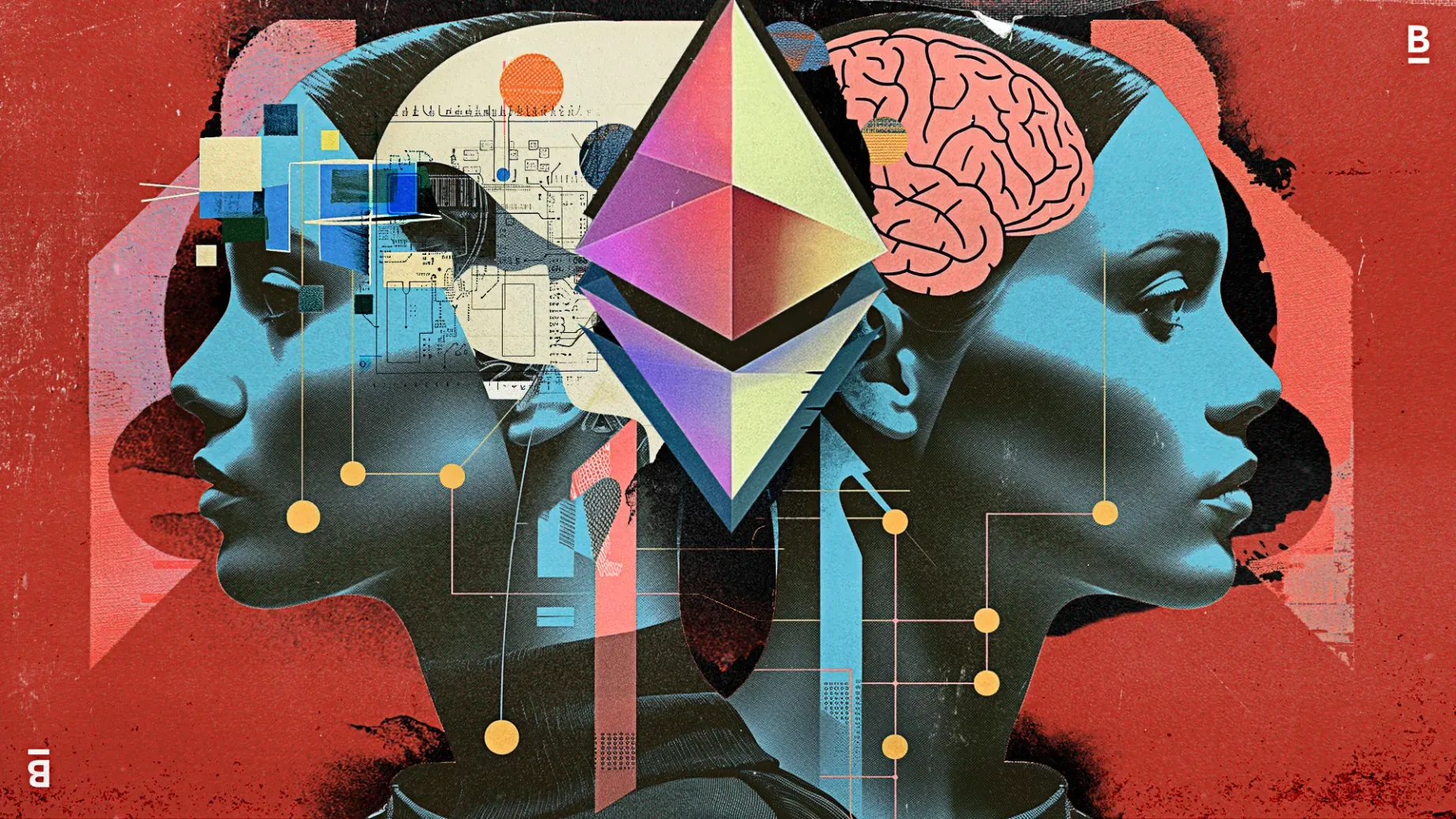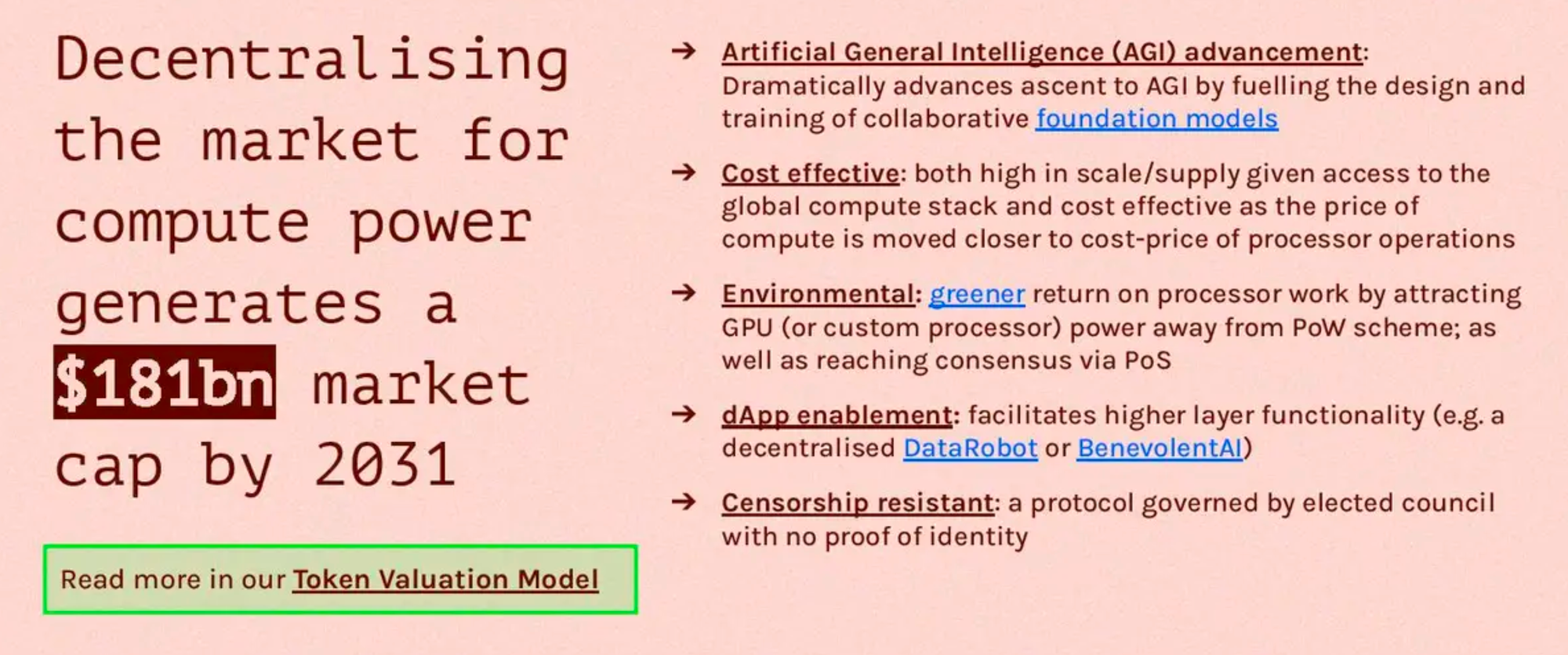Can Crypto's AI Protocols Beat Google?

We've been through a few AI hype cycles over the past several decades, but this one feels different. The tech is there, and investors see the opportunity. But despite the potential for massive value creation, tech's giants seem poised to eat the opportunity.
But don't worry; crypto's builders are working on a solution.
As AI accelerates adoption, the demand for computing power and data storage also experiences severe strain. A new class of protocols is enabling the development of so-called Decentralized Virtual Infrastructure (DeVIN). The technology taps the blockchain to create markets that expand access to GPUs and data storage.
In this article, we’ll look at the current state of the compute bottleneck crisis, the overall benefits of DeVIN, and standout projects leading the charge in this arena. Let’s begin👇

Artificial Intelligence's Centralization Problem
OpenAI's Sam Altman was in the news recently over saying that trillions of dollars were needed to tackle AI's near-term development challenges. Indeed, model training costs are predicted to hit 1% of US GDP (over $100B) in the next several years.
This historic demand is crippling compute supply lines, and DeVIN protocols are offering up potential solutions to these challenges.
The DeVIN space is primarily broken into classes of solutions:
- Protocols that decentralize compute
- Protocols that decentralize data storage
While market caps of AI-associated tokens are shooting the moon, the reality is that many of these projects are still in their infancy. Though plenty of the investor action can be ascribed to betting on the AI + Crypto meme, these protocols are building toward a vision everyone in crypto should be able to get on board with – greater decentralization of power and more community ownership in our AI future.
Let's take a look at some of the protocols pushing boundaries in DeVIN.


⚫️ Protocols Decentralizing Compute
By leveraging global networks of underutilized resources, DeVIN platforms like io.net, Gensyn and Grass are among those aiming to solve AI's compute crisis.
By developing markets where anyone can contribute CPU/GPU or storage power and earn rewards, these protocols are not only creating more competition among infrastructure providers, they're making AI development itself more competitive by democratizing resource access.
💻 io.net
io.net provides access to computational power by creating a decentralized network that lowers the cost and increases the availability of cloud computing resources by leveraging underused GPUs from sources like data centers and crypto miners, weaving them into a cohesive system offering substantial processing capability at fractions of traditional costs. Recently, io.net kicked off its Ignition Program, opening its platform to anyone who wants to provide GPU power to the network ahead of its token launch in April.

🧊 Gensyn
Gensyn is also looking to tackle the current constraints on compute with DeVIN. Like io.net, Gensyn directly connects unused processing power from around the globe with machine learning projects that need it, using a market-based mechanism to facilitate this exchange. Gensyn’s strict focus on machine learning applications distinguishes it from other DeVIN projects. In addition to supplying compute, Gensyn can verify the completion of work and model training correctly or incorrectly, ensuring that the training individuals in the network do on someone’s behalf can be trusted and relied on.

🌱 Grass
Grass is a decentralized network gathering public web data to train AI models. By installing their browser extension, users run a node on Grass and contribute available internet bandwidth to the network, enabling its partners to collect public website data and train their models. Users then receive compensation — or will; Grass is currently in beta — for the data they contribute.

⚫️ Protocols Decentralizing Data Storage
Now, let's shift from discussing decentralized compute to examining DeVIN for data storage.
These solutions are more mature than their compute counterparts but are still early bets on a vision that decentralized markets for data storage are needed to keep up with a massive resource constraint for training AI effectively. Estimates that the world will store more than 175 zettabytes (175T gigabytes) of data by 2025, reducing the costs and making it more efficiently structured will profoundly impact data training in AI and data management.

🗂️ Filecoin
Filecoin’s solution for data storage impacts data worldwide, turning unused storage space into an active, accessible market. The protocol distinguishes itself with its approach to storing data, encrypting, replicating, and distributing it across the network — making it highly resistant to censorship or data loss and much less expensive. Filecoin offers a robust and decentralized backbone for the data layer of AI, which aligns perfectly with the use case of blockchains as tamperproof data centers.
The platform uses a unique model to verify storage, ensuring that data stored on the network will remain safe and accurate over time. This verification process is an essential step as Filecoin aims to demonstrate that decentralized storage can be superior to traditional cloud storage solutions.
🗄️ Arweave
Arweave approaches data storage in a novel fashion, positioning itself as a permanent archive for the digital age instead of a temporary repository. Instead of using a “rent” model for data storage, the protocol uses a “buy” model, offering a one-time payment that secures data storage for centuries on their decentralized network, secured by AR — a mineable token. Arweave's ambitious vision of a decentralized, permanent web represents a significant leap forward in the quest for sustainable and secure data storage solutions.
Expanding on its foundation in data storage, Arweave recently broke into decentralized computing with its public testnet launch of Arweave AO. This new addition transforms Arweave from a storage solution into an overall computational platform with its "hyperparallel computer," capable of handling heavy computational workloads.
Where We're Headed
While DeVIN stands at the forefront of crypto tech, the path ahead is still filled with plenty of challenges.
The protocols above are earlier along than their market caps may suggest, and time is of the essence as generative AI advances compound and AI's biggest players begin the countdown to AGI.
Projects like io.net, Gensyn, Grass, Filecoin, and Arweave highlight the critical role of decentralized compute and storage in broadening the market and lowering entry costs; they also underscore the urgent need for DeVIN to address current adoption hurdles to support AI's growing computational demands fully.
While the pairing of Crypto & AI may seem almost like a meme to many, democratizing access to the infrastructure needed to compete in AI is not.
The compute and data storage challenges AI faces underscore an apparent demand for DeVIN solutions. However, fully realizing these benefits requires navigating early-stage adoption issues, regulatory hurdles, and an ongoing GPU arms race. Barriers like these still impede DeVIN's journey to becoming the backbone of AI infrastructure.
There's a lot at stake for DeVIN players that can't find product/market fit soon, and the coming months offer a unique window for decentralized compute providers to secure their place in the market. There's a lot at stake!


